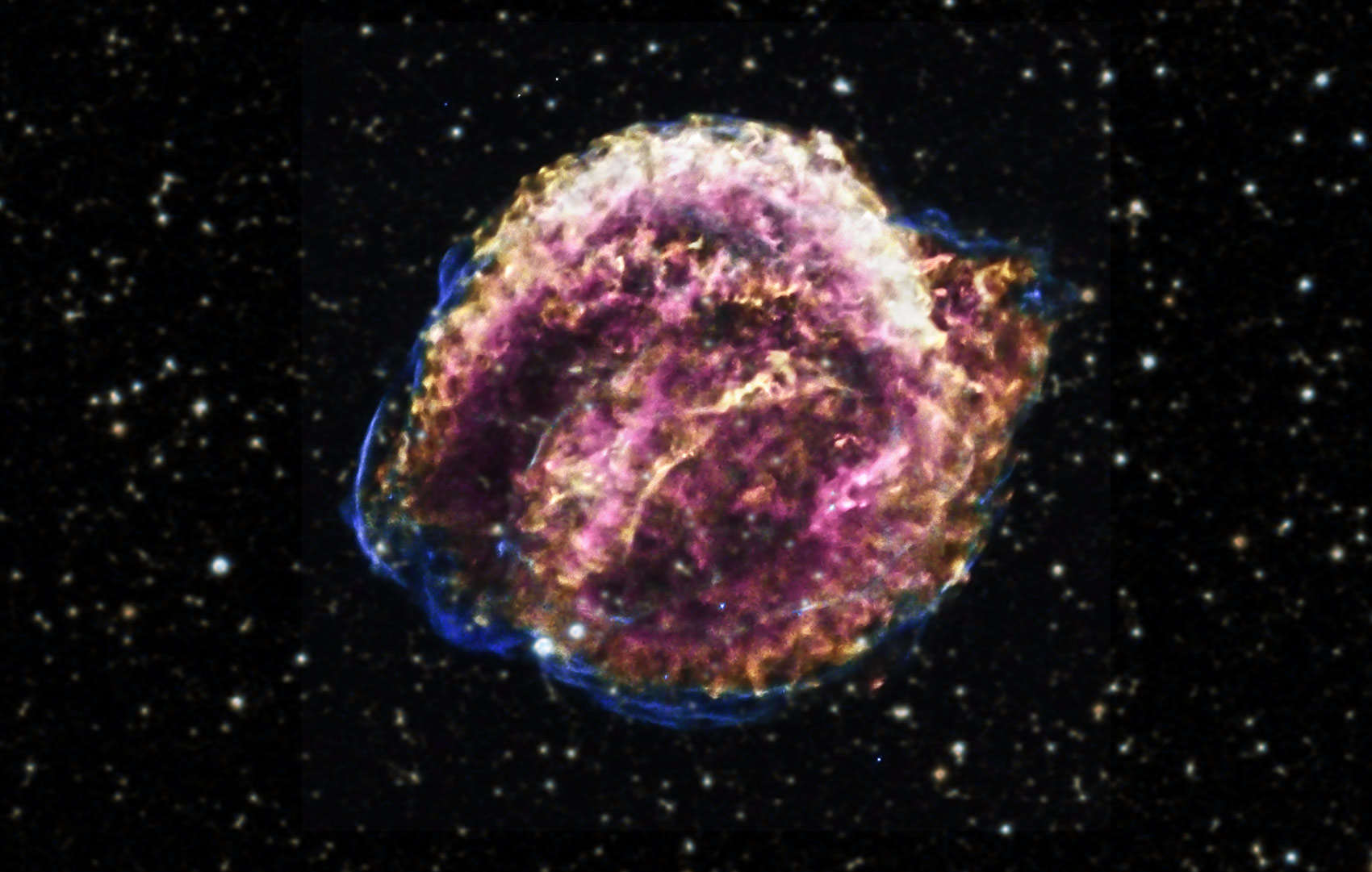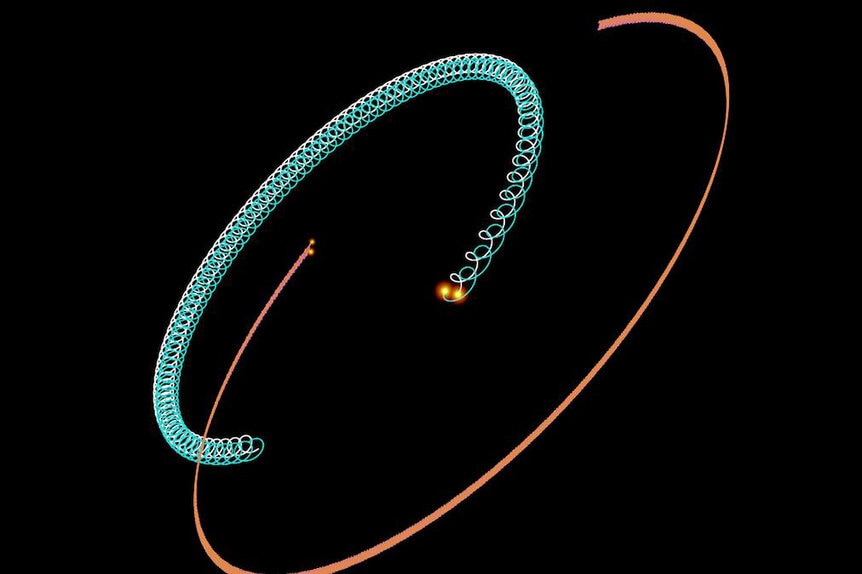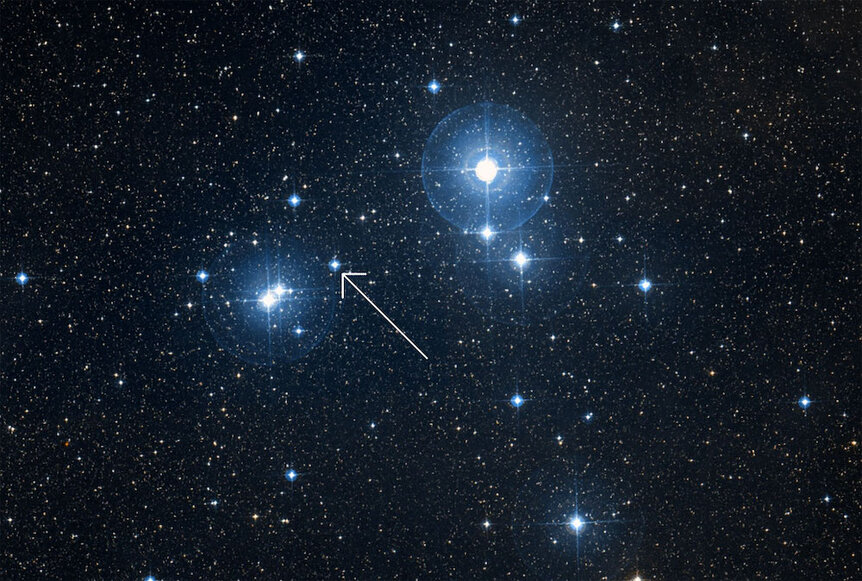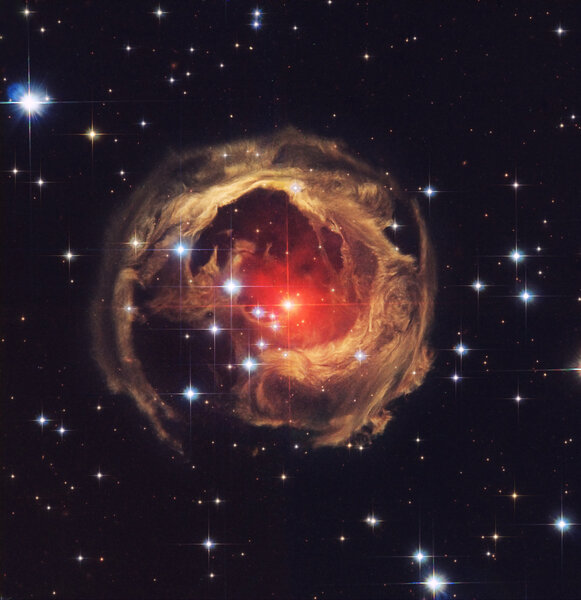Create a free profile to get unlimited access to exclusive videos, sweepstakes, and more!
A weird four-star system may lead the way to catastrophic supernovae
Colliding stars in a quaternary system could explode.

About 460 light-years from Earth lies the small but lovely star cluster IC 2391. It only has about 250 stars in it, but one of them is special… because it’s actually four stars, a quaternary system. Astronomers studying this system have now shown that complicated interactions between the stars will lead to quite the life for them, and maybe — maybe — quite the death. They may not explode as supernovae, but they show us that it doesn’t take much to make such a system die catastrophically [link to paper].
The stars are collectively called HD 74438, thought to be one star for decades. However, there’s been a suspicion something was up with this star because it’s a lot brighter than you’d expect for the kind of star it appears to be. It was only in 2017 that it was revealed to be a quaternary system; spectra taken of HD 74438 showed there are four stars there, a binary pair of stars orbiting a second binary pair — what’s called a hierarchical system, a system made up of smaller systems. The cluster IC 2391 is only about 40 million years old, making HD 74438 the youngest spectroscopic quaternary system known.
The two binary pairs are different. One pair, called stars A and B, are about 1.7 and 1.5 times the mass of the Sun, making them more luminous than our star — combined they’re about 14 times brighter than the Sun. They orbit each other in a decently elongated ellipse once every 21 days or so, with an average distance of about 30 million kilometers — about half the distance of Mercury from the Sun.
The other binary, stars C and D, are just about the same mass as the Sun, or maybe a hair less. They are in a much tighter orbit around one another, taking just 4.4 days to orbit once at a distance of about 10 million km.
The stars C/D orbit the stars A/B every 6 years. The orbit is highly elliptical, ranging from 450 million to 1.2 billion kilometers, and that turns out to spell their doom.
A star like the Sun creates energy by fusing hydrogen nuclei into helium in its core. Eventually that runs out, and in a complicated process this leads to the star swelling up into a huge red giant, blowing away its outer layers, and eventually exposing its highly compressed and very hot core to space. We call that object a white dwarf. It can have as much mass as the Sun but only be about the same size as Earth! That makes it extremely dense, with a cubic centimeter of white dwarf material having a mass of a ton. Yikes.
For solitary stars that’s pretty much the end of the story. The white dwarf fades over billions of years, and that’s that.
But if the star is in a binary system, orbited by a still-normal star, things can be very different. It can draw matter off the other star, which piles up on the white dwarf. The immense gravity of the white dwarf, hundreds of thousands of times stronger than Earth’s can compress this matter enough that it undergoes thermonuclear fusion, exploding like a bomb.
This can blast away a huge amount of energy, creating what we call a nova, which is thousands of times brighter than the Sun. But if enough material undergoes fusion the blast can be so huge it tears the entire star apart, creating a supernova, which can be 10 billion times brighter than the Sun! Ka — and I cannot stress this enough — boom.
In general, the white dwarf has to accrete enough matter to get about 1.4 times the mass of the Sun before it can explode. This was first calculated by the brilliant astronomer Subrahmanyan Chandrasekhar, so we call it the Chandrasekhar limit.
Which brings us back to HD 74438. Eventually, both stars A and B will run out of fuel, become red giants, and then white dwarfs. Neither on its own will be massive enough to explode, and given their orbit now they should be far enough apart not to draw matter off each other.
… their orbit now. Astronomers looked into what this system will do over time, how it will evolve. Using sophisticated simulations, they found something startling: The gravity from the C/D binary pair will poke and prod at the A/B orbit over time, causing them to merge into a single, more massive star! They show it’s also possible that the converse will happen as well, C and D will merge due to the gravity of A/B destabilizing them.
Mergers like this are not unheard of; we think the ridiculously cool object V838 Monocerotis is a huge cloud of dust and gas ejected when two stars merged. Eventually the more massive star will become a white dwarf. The simulations for HD 74438 show that neither the white dwarf resulting from the A/B merger or the C/D merger will exceed the Chandrasekhar limit. I’ll add it’s possible that over time the two white dwarfs will themselves merge. If they do they’ll exceed that limit, and explode. That wouldn’t happen for a very, very long time though.
So while HD 74438 may or may not result in such a supernova billions of years from now, it shows that this is another way such an explosion can occur. We know a white dwarf with a normal companion can explode, or two white dwarfs in a binary can merge and explode, and now we know a hierarchical quaternary could do that as well. If the stars in HD 74438 were just a teeny bit more massive, their fate as a supernova — or supernovae, if both binaries were massive enough — would be sealed.
This wouldn’t be a very common way to generate a supernova, but it shows again that sub-Chandrasekhar limit white dwarfs can merge and exceed the limit, and also that the Universe has a lot of pathways to make stars explode. These explosions create heavy elements like iron and calcium, and make it possible for life to arise in the Universe — or at least in our case on Earth. It’s rather nice to know there are so many different ways such a thing could happen.





























